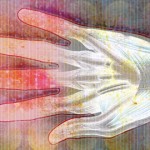Carpal tunnel syndrome (CTS) is possibly the most common nerve disorder experienced today. It affects 3% to 7% of the population and is usually treatable. Middle-age and older individuals are more likely to develop CTS than younger people, and women develop CTS three times more frequently than men.
The carpal tunnel is located at the wrist on the palm side of the hand just beneath the skin surface (palmar surface). Eight small wrist bones form three sides of the tunnel, inspiring the name carpal tunnel. The remaining side of the tunnel is made of soft tissues, consisting mainly of a ligament called the transverse carpal ligament. This ligament stretches over the top of the tunnel. Usually CTS affects only one hand, but can affect both at the same time. This may cause symptoms in all or some of the fingers, including the thumb, index, middle, and adjacent half of the ring finger (but rarely the little finger). Those with the syndrome may experience numbness, tingling, pins-and-needle sensation, or burning of the hand, occasionally extending up the forearm.
CTS may be found in patients who are pregnant, overweight, have various medical conditions (including thyroid disease, diabetes, or arthritis), or have sustained injuries (such as wrist fractures).
Whether repetitive work activities cause CTS is still controversial, write fact-sheet co-authors Joseph J. Biundo, MD, and Perry J. Rush, MD. It is thought that some repetitive hand activities, especially those involving vibratory motion, can worsen the symptoms. Just as frequently, however, the syndrome occurs on its own.
CTS is often diagnosed based on an accurate description of the symptoms. Confirmation and severity can be determined by a two-part electrical test involving nerve conduction and electromyography. In recent years, diagnostic ultrasonography and MRI scans have been used to help diagnose CTS and exclude other causes of hand and wrist symptoms. CTS can be treated with medication such as acetaminophen and nonsteroidal anti-inflammatory drugs for symptom relief. Splinting the wrist, especially at night, helps keep it straight and decreases pressure on the median nerve. These splints, which are available in most drug stores, may relieve symptoms – especially in milder cases. In more advanced cases, cortisone injections and surgery may also be considered.
Download the complete CTS fact sheet and other patient-education materials by following the links to patient education from the Practice Support menu.

